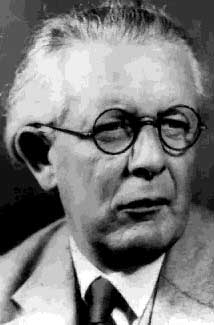Important Theorists: Jean Piaget, Lev Vygotsky


:


 As a Language Arts teacher, I believe one good way to use Social Cognitive Theory in the classroom is through modeling, not just for the group, but as a group. If we had to write a research paper, I would ask the class to pick a topic. Once we had a topic, I would let them know we are going to write a paragraph like I would like to see in one of their papers. To start things off, I would ask them for suggestions about what we should talk about in the paragraph. For example, if we were talking about how to grow strawberries, I might have things on the board like using good soil, asking a professional, what kind of bugs might ruin the berries, how long to they take to mature, whatever they suggest that is relevant to growing strawberries. Once we have a good list, I would want to narrow it down to what could fit in a single paragraph and what makes sense to have in the same paragraph. While having the class look at the list, I would ask for suggestions for a topic sentence and conclusion sentence that for starting and ending the paragraph. I think this works as a good method of modeling because it is not just me standing in front of the class writing my own ideas. This style allows for everyone to participate in the synthesizing process.
As a Language Arts teacher, I believe one good way to use Social Cognitive Theory in the classroom is through modeling, not just for the group, but as a group. If we had to write a research paper, I would ask the class to pick a topic. Once we had a topic, I would let them know we are going to write a paragraph like I would like to see in one of their papers. To start things off, I would ask them for suggestions about what we should talk about in the paragraph. For example, if we were talking about how to grow strawberries, I might have things on the board like using good soil, asking a professional, what kind of bugs might ruin the berries, how long to they take to mature, whatever they suggest that is relevant to growing strawberries. Once we have a good list, I would want to narrow it down to what could fit in a single paragraph and what makes sense to have in the same paragraph. While having the class look at the list, I would ask for suggestions for a topic sentence and conclusion sentence that for starting and ending the paragraph. I think this works as a good method of modeling because it is not just me standing in front of the class writing my own ideas. This style allows for everyone to participate in the synthesizing process.
 The study of "Behaviorism" in education is a scientific approach to understanding how to run a classroom using psychological studies that can cross into educational pedagogy. The aim is to educate teachers on how to get what they want from students, by using behavioral incentives and or behavior conditioning. By understanding what "stimulates" students and what types of behavioral conditions will drive "results" that will prompt students to not only behave better, but learn material in certain ways. Behaviorists could be labeled as "carrot" teachers because the goal is to reward students for successful behaviors, while dissuading bad behaviors. The study of "Pavlov's dog" is a prime example of the type of thought behind the science. By substituting the student with the dog, one can imagine the desired goal of creating students that associate good behavior with desired outcomes, much like the dogs associated the sound of the bell with food.
The study of "Behaviorism" in education is a scientific approach to understanding how to run a classroom using psychological studies that can cross into educational pedagogy. The aim is to educate teachers on how to get what they want from students, by using behavioral incentives and or behavior conditioning. By understanding what "stimulates" students and what types of behavioral conditions will drive "results" that will prompt students to not only behave better, but learn material in certain ways. Behaviorists could be labeled as "carrot" teachers because the goal is to reward students for successful behaviors, while dissuading bad behaviors. The study of "Pavlov's dog" is a prime example of the type of thought behind the science. By substituting the student with the dog, one can imagine the desired goal of creating students that associate good behavior with desired outcomes, much like the dogs associated the sound of the bell with food.